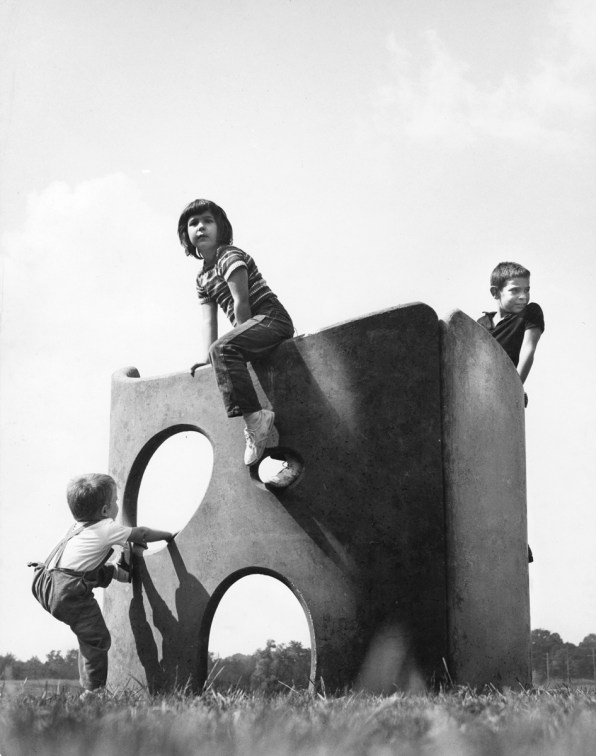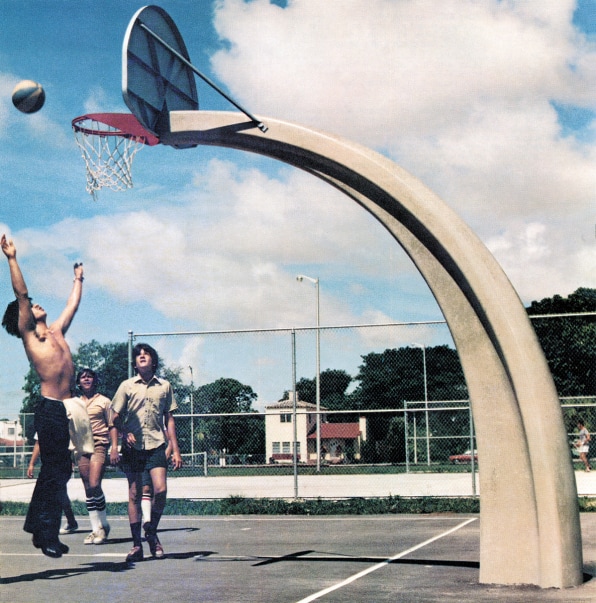How to Play Changes on Guitar Charles Bradley
No one doubts the importance of play in childhood development–it lets kids figure out the world in an environment that encourages creativity, movement, and socializing. Swing sets teach kids about momentum, slides about gravity, monkey bars about coordination. Some of the cutting-edge playgrounds of today even experiment with movable objects to get kids collaborating and thinking like designers.
But playground design wasn't always so diverse. For that we can thank, in part, Jim Miller-Melberg, an artist who rebelled against conventional playground design, creating climbable, abstract sculptures that changed how a generation of kids played.

Miller-Melberg is one of dozens of designers featured in Michigan Modern: Design that Shaped America (Gibbs Smith, 2016), a new book edited by Amy Arnold and Brian D. Conway that charts how practitioners who lived, worked, or were educated in the state influenced the country as a whole. In many ways, Michigan is the cradle of modernism in America: Henry Ford shaped how we get around and how factories manufactured products. Architect Albert Kahn and his brother, engineer Julius Kahn, revolutionized how we build by inventing reinforced concrete and constructed the first structures with the material in Detroit. A generation of midcentury modernists cut their teeth at Cranbrook and created furniture that revolutionized the way we live.
Miller-Melberg, meanwhile, designed a new way to have fun.
Born in 1929, Miller-Melberg was introduced to sculpture as a child via his patternmaker father's workshop in Detroit. There, he experimented with metal and wood and eventually became a journeyman patternmaker by the time he graduated college. After brief stints at Wayne State University and the University of Michigan, he decided to pursue independent study and traveled to Europe where he scoped the studios of artists Henry Moore, Barbara Hepworth, and Bernard Leach. The early sculptures he made were carved from wood, but he eventually cast large-scale bronze pieces before moving on to more utilitarian objects–like his play forms, which would become iconic.
In 1961, Miller-Melberg founded Form, Inc., a company that designed and manufactured "sculptures for play" made from molded concrete. (He also made park benches and furniture.) These included slides that looked like abstract saddles; climbable forms reminiscent of double helixes found in DNA; cylindrical towers and wavy walls with cutouts.
He spoke about how he developed pieces for an environment of play in a 2014 interview with design writer Debbie Millman, which is published in the book:
I grew up in the country and we always had a garden, had a little stream going through our property, glacial rocks in the stream, and we would jump from one to the other. But it was an environment for play. When I started designing, swings and slides were about it. I think kids love to swing and slide, but the emphasis is on individual activity. What I was trying to get across was to provide an environment to play together.
Miller-Melberg wasn't alone in his "playscapes" approach. Designers like Isamu Noguchi and the Smithsons experimented with abstract forms.
But what made a difference is the widespread adoption of Miller-Melberg's work. Cities across the country latched on to his philosophy. He had contracts with San Diego and Los Angeles to furnish their public parks with his play forms. His turtles can be found in Golden Gate Park, in San Francisco. He built a special concrete basketball hoop stand for Miami-Dade County parks, which were resilient in the region's salt air; now the hoops are all over the country. In researching the book, Arnold and Conway discovered the sculptor's work installed as far away as Kuwait and Saudi Arabia.
Miller-Melberg manufactured his products until selling the company in 1981 to Wausau Tile, a Wisconsin-based fabricator of architectural products; to this day, it still sells Miller-Melberg's park furnishings.

"Jim's play sculptures represent a broader movement to incorporate art into daily life," Arnold says. "It was thought that if children were around art and design, they would gain a strong appreciation for it that would carry over into their adulthood and shape the choices they made. That was the beauty of Modernism, it was all about 'better living' and making a better world. Jim has said that what he tried to do with his play sculptures was to provide an environment where children could be creative and put their imaginations to use–the possibilities were limitless. He likened them to playing on natural rock formations. The plastic, primary colored play structures of today are not very inspiring."
Arnold and her team included Miller-Mellberg in the book partly out of nostalgia, and because of the personal connection they had with his designs–a sentiment that reinforces the broad, sweeping impact Michigan designers had.
"The baby boomers working on the book remembered Jim's work, which appeared in playgrounds, school yards, parks, and malls across America throughout the 1960s," Arnold says. "When we started the Michigan Modern project, we had no idea Jim was from Michigan. A colleague had found a copy of a 1960s Play Forms catalog, and when we saw Jim was from South Lyon, Michigan, we were thrilled. It supported our claim that Michigan designers shaped the modern America lifestyle."
How to Play Changes on Guitar Charles Bradley
Source: https://www.fastcompany.com/3065009/the-midcentury-sculptor-who-changed-the-way-kids-play

0 Response to "How to Play Changes on Guitar Charles Bradley"
Post a Comment